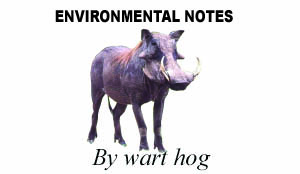 They are generalist feeders, capable of digesting a wide range of substances due to the variety of bacteria and protozoa in their digestive systems.
They are generalist feeders, capable of digesting a wide range of substances due to the variety of bacteria and protozoa in their digestive systems.
They help decompose forest litter and animal fecal matter and are, in turn, food for many other animals, including scavengers of dead cockroaches, predators, and egg parasites.
They are therefore an important part of the food web. The success of their survival strategies is proven by the longevity of the group and their amazing diversity.
Only about one percent of cockroach species are considered pests to humans and these are basically nuisance pests.
Cockroaches have earned a bad reputation not only because they feed on human food stores and garbage but because they foul their surroundings, leave behind a repugnant odor, and are extremely difficult to eradicate.
However, cockroaches may not be as dirty as they seem. In laboratory experiments, household species are capable of contaminating food and other objects with human disease organisms, but they have not been implicated in actual disease outbreaks.
In fact, cockroaches spend a great deal of time cleaning themselves.
Cockroaches have been the target of many insecticides over the years but they have developed resistance to several of them. Attempts to use pheromones as sex lures or to sterilise male cockroaches have thus far not proved practical on a large scale.
Sprinkling abrasives such as diatomaceous earth to penetrate their protective cuticles may work in individual households as a nonpoisonous alternative. Once the cuticle is abraded, the roaches die of dehydration.
Also effective is boric acid powder, which is both abrasive and poisonous to cockroaches.
The best way to prevent cockroaches from multiplying is to keep a clean house and block their access to water, which they need to survive.
Cockroaches are very easy to keep and rear in the laboratory and make excellent subjects for experimentation because of their large size and generalised morphology.
They have been the subject of countless studies that have tremendously increased our understanding of insect biology.
At least two inoffensive species of cockroaches are kept as pets.
These are the large, winged Brazilian cockroach and the Madagascar hissing cockroach.
Cockroaches in general have one very important symbiotic relationship with bacteroids living in special cells, mycetocytes, in their fat body tissue.
The bacteroids are passed from generation to generation as a thin coating on their eggs, between the chorion and the oocyte cell membrane.
During embryology these bacteroids invest in the female future ovary and the developing fat body tissue.
The bacteroids produce all the vitamins needed by the cockroach with the exception of choline and cholesterol which remain as the only essential vitamins of the cockroach.
The close relatives, termites and preying mantids have lost or never gained this type of symbiont. They must get their vitamins, like Vit A and D, in their food.
This is a true symbiotic relationship since the cockroaches have protected the bacteroids over the millions of years of their association and probably these bacteria-like organisms have been protected from changes forced on their strains by mating with other bacterial strains and have remained true to their type since they accepted the cloistered life they enjoy in the cockroach fat body.
As long as the cockroach survives, these bacteroids will survive.
They have hung their survival on a pretty sure bet. How is that for a symbiotic benefit?
The cockroach makes out pretty well also since due to the vitamins supplied by the bacteroids, the cockroach can eat almost anything organic without thinking of whether it has vitamins and essential amino acids, which we all need to get via our diet or a vitamin pill!
ear of domestic cockroach pests is perhaps warranted because they have been associated with the development of childhood asthma and thus it is better not to have them in your home environment.
Cockroaches as a group are part of the worldwide food web. They are omnivore scavengers which clean up our environment and help recycle the organic litter that would accumulate if it were not decomposed by organisms which include cockroaches.
Furthermore they serve as food for small mammals, birds, amphibians and lizards.
There are over 3000 species of cockroaches and only 10 species are on the World Health Organisation list of human pests. The other 3000 species are welcome members of the biodiversity on this planet.
Wildlife & Environmental Conservation Society of Zambia
P.O. Box 30255, Lusaka, Zambia.
Telefax: 260-211-251630, Cell: 0977-780770
E-mail: wecsz@coppernet.zm






